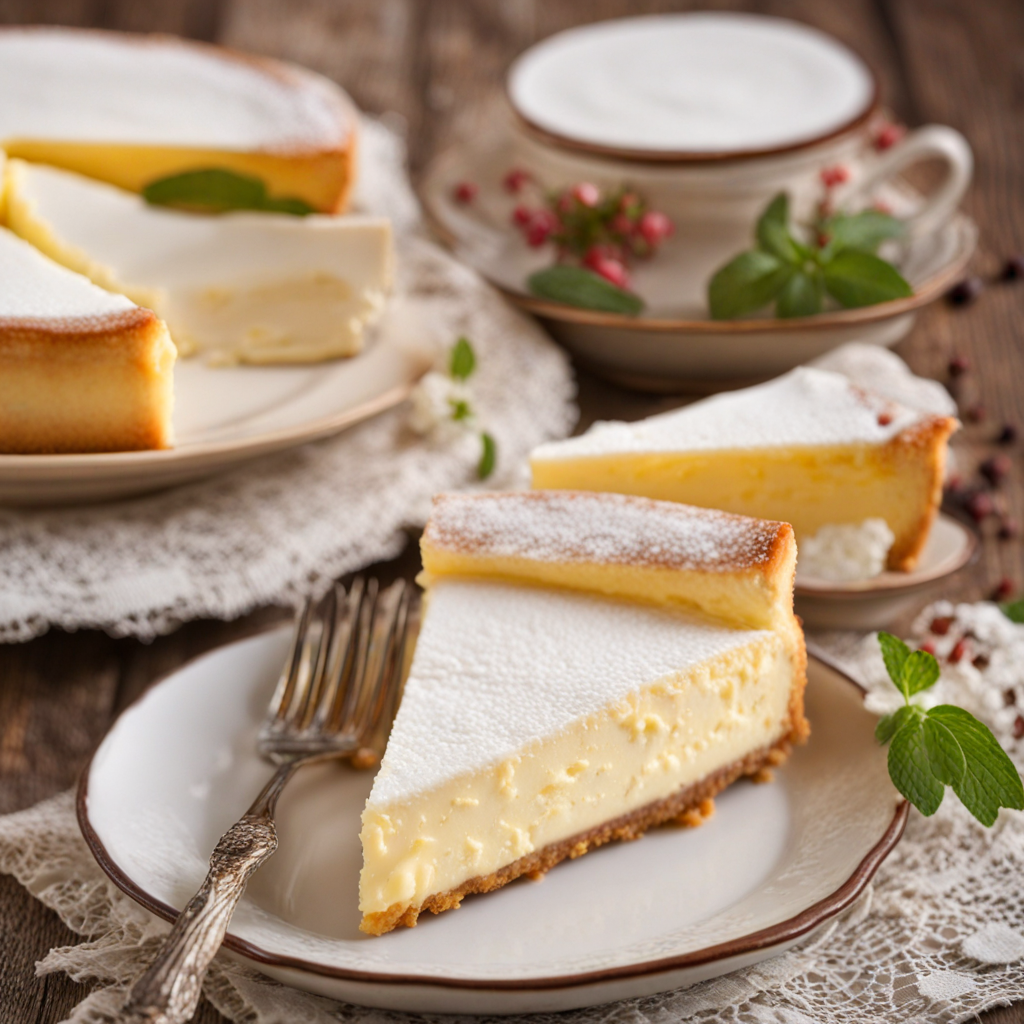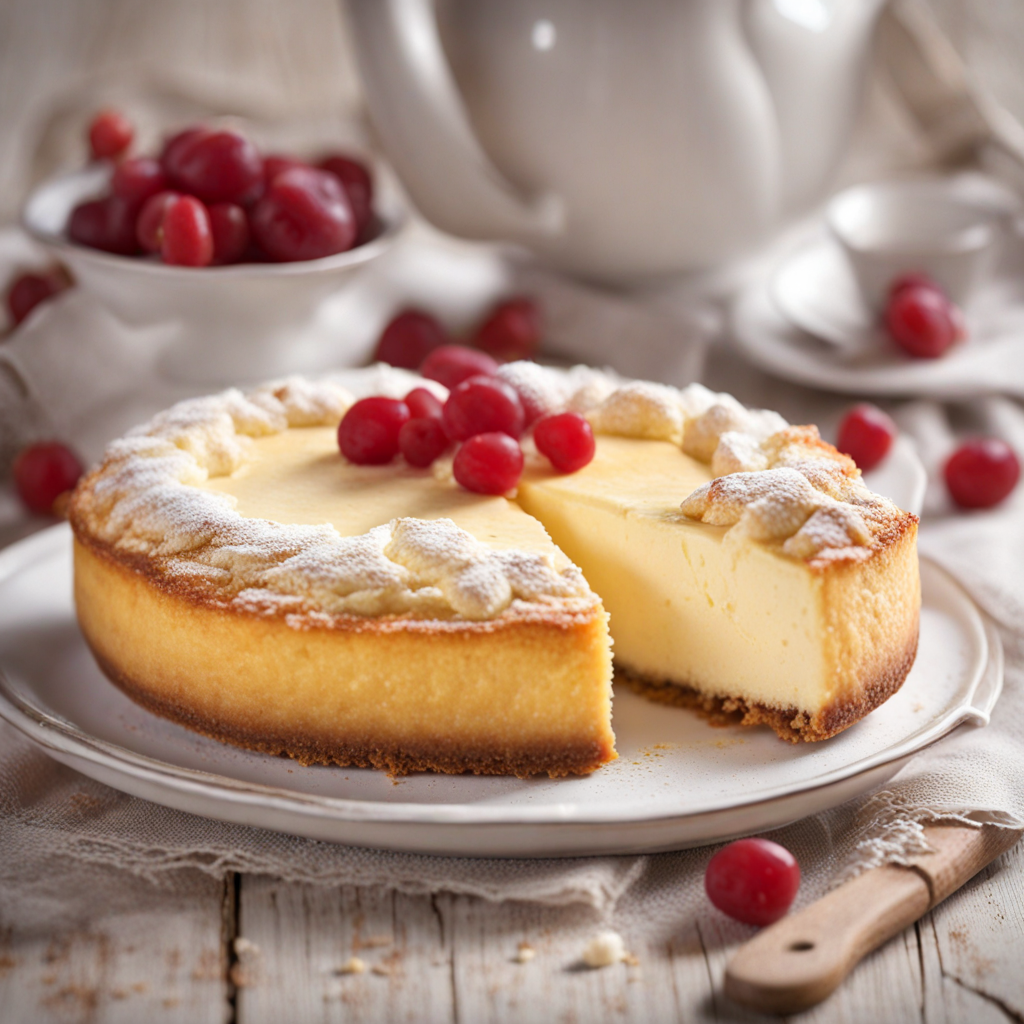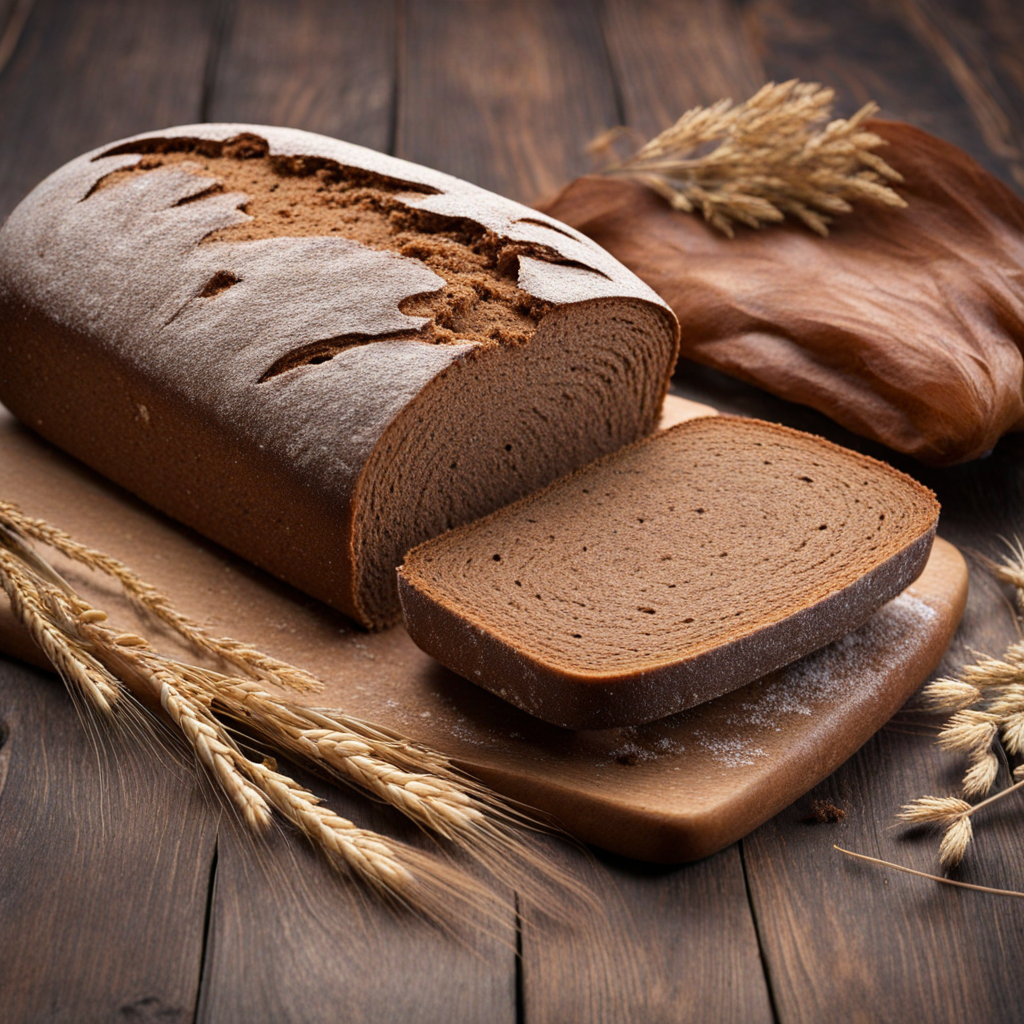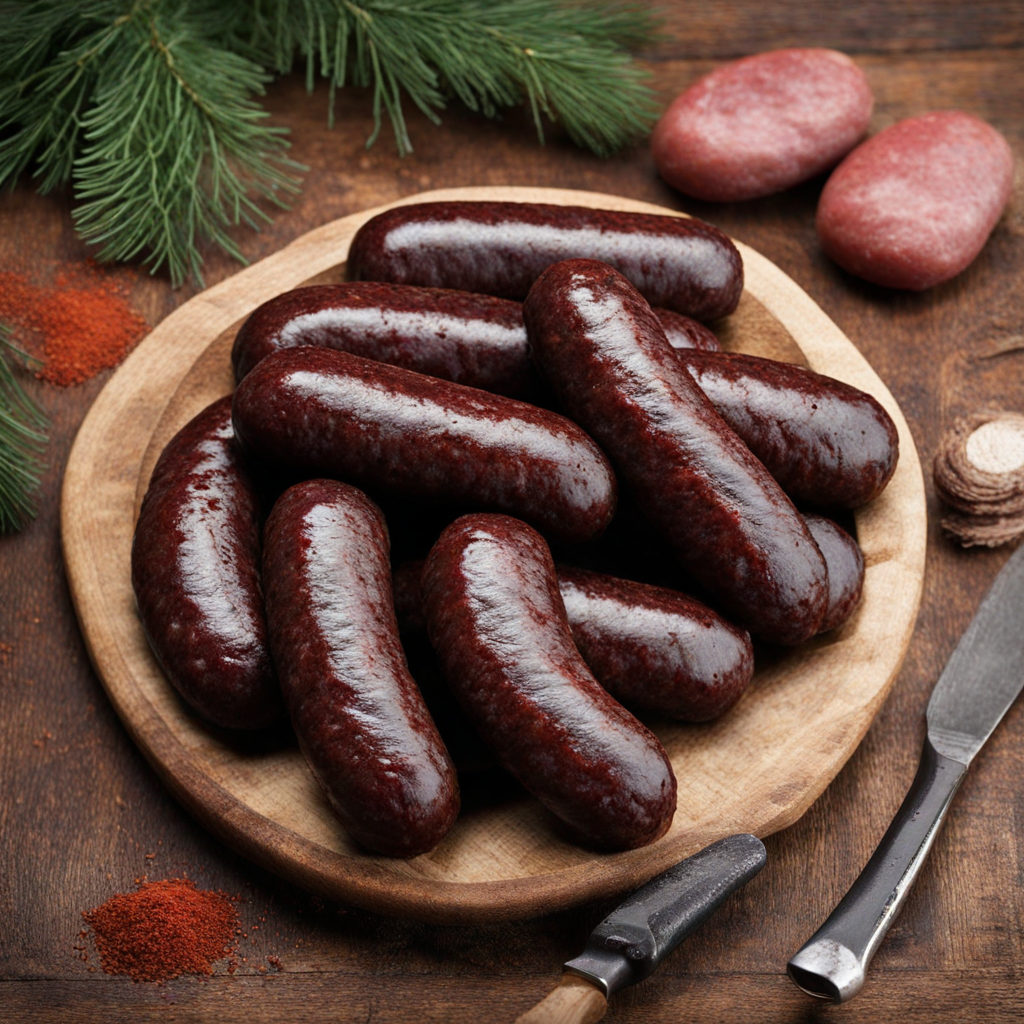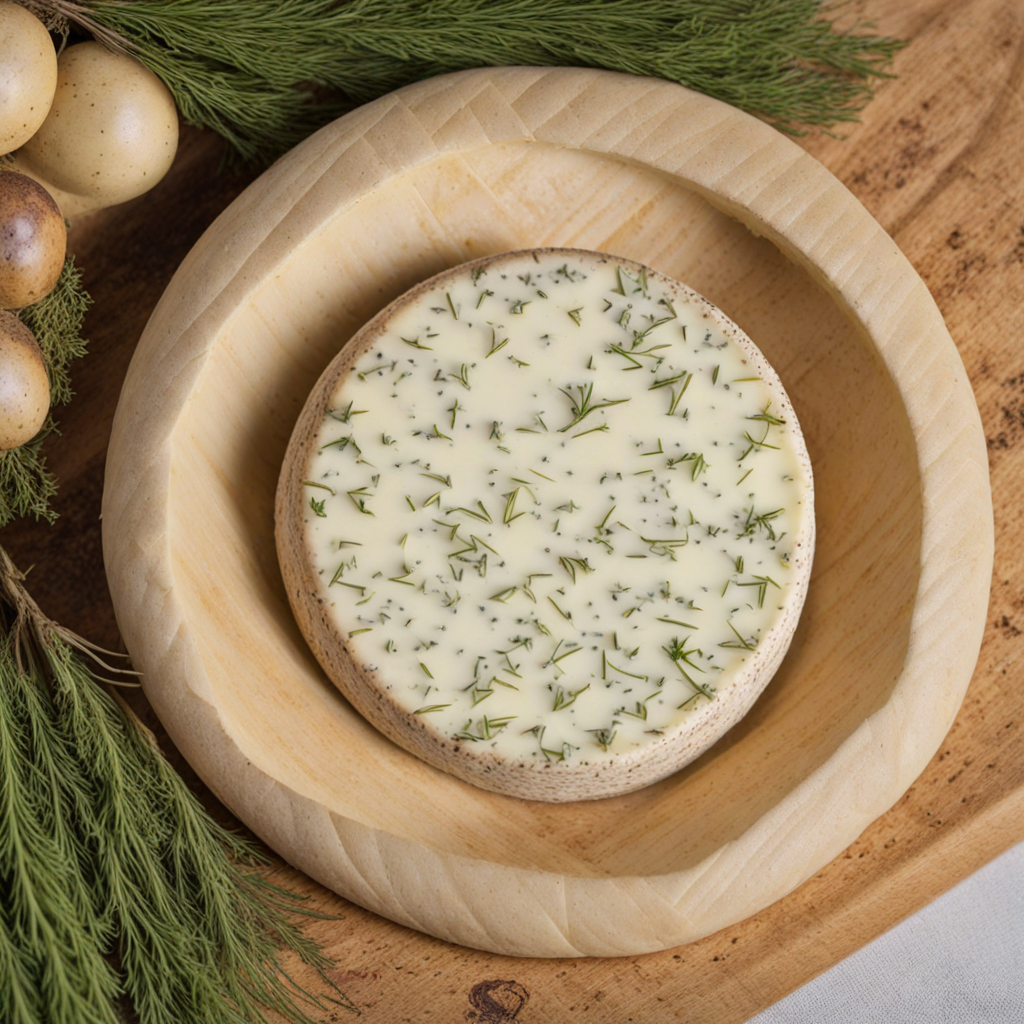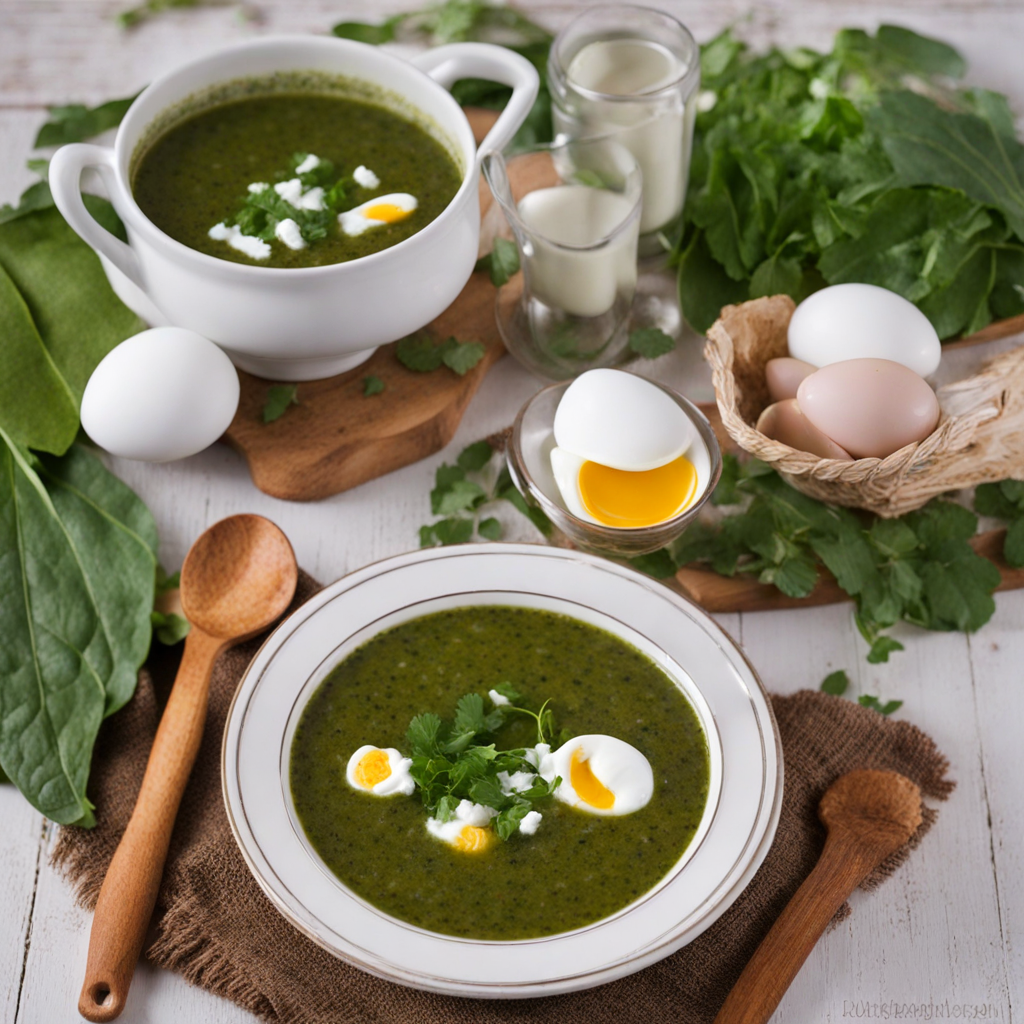Biezpienmaize
Biezpienmaize, a delightful Latvian treat, is a unique bread-like creation that showcases the country's rich culinary heritage. This traditional dish is primarily made from a mixture of rye flour and curd cheese, known as biezpiens, which gives it a soft, moist texture and a subtly tangy flavor. The combination of these ingredients results in a hearty loaf that is both nourishing and satisfying, perfect for any meal of the day. Its rustic appearance, often adorned with a sprinkle of caraway seeds or sesame, invites you to experience the warmth of Latvian home cooking with every slice. As you take your first bite of Biezpienmaize, you will notice the delicate balance between the earthiness of the rye and the creaminess of the biezpiens. This bread is often enjoyed fresh, still warm from the oven, or toasted to create a crispy exterior that contrasts beautifully with the soft interior. It pairs wonderfully with a variety of toppings, such as butter, honey, or smoked fish, allowing for endless flavor combinations that cater to both sweet and savory preferences. The versatility of this bread makes it an excellent companion for breakfast, lunch, or even as a snack throughout the day. In addition to its delightful taste, Biezpienmaize is steeped in tradition and often made for special occasions or family gatherings. The process of making this bread can be a communal activity, bringing loved ones together to share in the joy of cooking. Its cultural significance, along with its delicious flavor, makes Biezpienmaize a must-try for anyone looking to explore the authentic tastes of Latvia. Whether enjoyed on its own or as part of a larger meal, this bread is sure to leave a lasting impression on your palate and inspire you to delve deeper into Latvian cuisine.
How It Became This Dish
Origins of Biezpienmaize Biezpienmaize, a traditional Latvian dish, translates directly to "cottage cheese bread." Its origins can be traced back to the agrarian lifestyle of Latvia, where dairy farming played a pivotal role in the daily sustenance of the population. Cottage cheese, or "biezpiens," was a staple product derived from the abundant milk produced by local cows. This led to the natural incorporation of cottage cheese into various baked goods, resulting in the creation of Biezpienmaize. The bread itself is made primarily from a simple dough of flour, yeast, and water, combined with generous amounts of curds. The use of cottage cheese not only contributes to the bread's unique texture and flavor but also provides a nutritional boost, making it a hearty option for rural families. Historically, Biezpienmaize was often baked in wood-fired ovens, which imparted a distinctive smoky flavor and crusty exterior that is cherished in traditional recipes even today. \n Cultural Significance The cultural significance of Biezpienmaize extends beyond mere sustenance; it is a symbol of Latvian culinary heritage. In Latvia, bread is often considered sacred, and Biezpienmaize holds a special place at festive gatherings and family celebrations. It is not uncommon for this bread to be served at weddings, holidays, and other significant occasions, representing abundance and hospitality. Traditionally, Biezpienmaize would be enjoyed with butter, honey, or jam, enhancing its flavor profile and making it a versatile dish for any meal of the day. The bread's association with Latvian folklore and customs has only added to its significance, as it is often mentioned in songs, stories, and even rituals, showcasing its importance in Latvian identity and community life. \n Development Over Time As Latvia experienced various political and social changes throughout the centuries, so too did the preparation and consumption of Biezpienmaize. During the early 20th century, Latvia faced significant upheaval, which influenced not only the agricultural practices but also the traditional recipes passed down through generations. The introduction of modern baking techniques and ingredients changed the way Biezpienmaize was made, with many families adapting their recipes to suit new tastes and conveniences. Despite these changes, the core identity of Biezpienmaize remained intact. Its preparation became a family affair, with children learning from their elders how to mix the ingredients and knead the dough. This passing down of knowledge is crucial to the preservation of Latvian culinary traditions, allowing Biezpienmaize to evolve while still maintaining its roots. \n Modern Interpretations In recent years, Biezpienmaize has seen a resurgence in popularity, both within Latvia and among the diaspora. As globalization increased interest in traditional foods, chefs and home cooks alike began to experiment with the classic recipe, incorporating modern flavors and ingredients. Some variations now include seeds, nuts, and even dried fruits, catering to contemporary palates while still honoring the traditional aspects of the dish. Additionally, the rise of health-conscious eating has led to a renewed interest in Biezpienmaize, as cottage cheese is recognized for its high protein content and low-fat profile. This has allowed the bread to find a place in modern diets, appealing to those who seek nutritious yet flavorful options. Food bloggers and influencers have also played a role in promoting Biezpienmaize, sharing recipes and personal stories that spotlight the dish's cultural heritage. \n Biezpienmaize in Contemporary Latvian Society Today, Biezpienmaize is often featured in cafes and restaurants across Latvia, celebrated for its rich heritage and comforting taste. It has become a beloved option on brunch menus and is often paired with local ingredients, such as seasonal vegetables or traditional jams made from local berries. Festivals celebrating Latvian food culture frequently highlight Biezpienmaize, showcasing its enduring popularity and significance in contemporary society. Moreover, many Latvians take pride in the artisanal approach to making Biezpienmaize, with local bakers sourcing high-quality flour and fresh cottage cheese from nearby farms. This farm-to-table movement aligns with a broader trend towards sustainability and local sourcing, further embedding Biezpienmaize into the fabric of Latvian culinary identity. \n Global Recognition As international interest in Latvian cuisine continues to grow, Biezpienmaize is gaining recognition beyond the borders of Latvia. Food enthusiasts and travelers are increasingly seeking out authentic experiences that include traditional dishes, and Biezpienmaize is often highlighted as a must-try. Cooking classes and culinary tours in Latvia frequently include a segment on this traditional bread, allowing visitors to engage directly with the rich heritage associated with it. Social media platforms have also played an essential role in promoting Biezpienmaize to a global audience. Images of beautifully baked loaves, often adorned with rustic toppings, have captured the attention of food lovers worldwide. This visibility not only honors Latvians’ culinary traditions but also fosters a sense of pride among the Latvian community, both at home and abroad. \n Conclusion In essence, Biezpienmaize is much more than just a type of bread; it is a reflection of Latvia's agricultural history, cultural identity, and evolving culinary landscape. From its humble beginnings as a rural staple to its modern interpretations and global recognition, Biezpienmaize serves as a delicious reminder of the importance of food in shaping community, tradition, and heritage. The story of this beloved bread continues to unfold, ensuring its place in the hearts and stomachs of both Latvians and food lovers around the world.
You may like
Discover local flavors from Latvia


